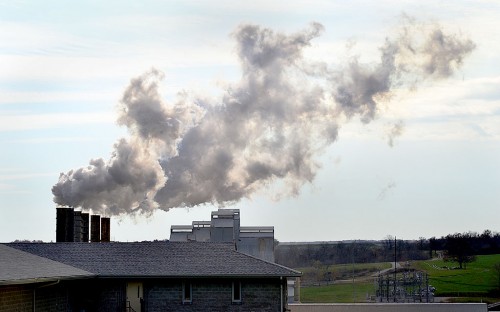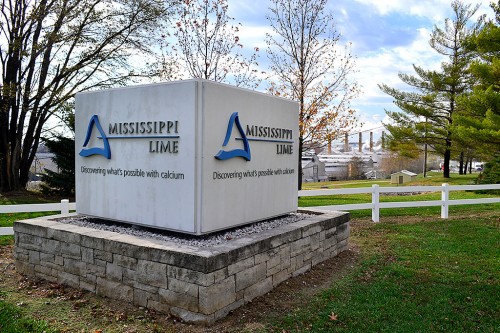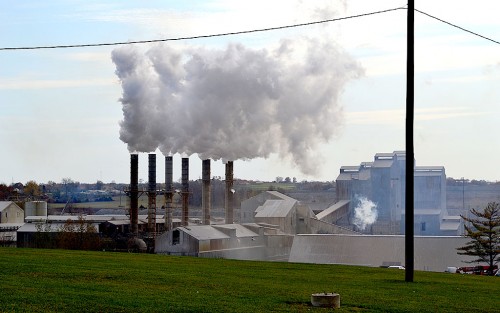 When I was riding U.S. 61 last month, I kept my eye open for the tell-tale white coating that let you know that you were coming up on Ste. Genevieve. When I was a kid, the whole landscape was covered with a white powder that looked like snow. If it had just started raining, it turned the roadway into a slurry that was slick as grease on glass and would coat your windshield with impenetrable goo.
When I was riding U.S. 61 last month, I kept my eye open for the tell-tale white coating that let you know that you were coming up on Ste. Genevieve. When I was a kid, the whole landscape was covered with a white powder that looked like snow. If it had just started raining, it turned the roadway into a slurry that was slick as grease on glass and would coat your windshield with impenetrable goo.
Established quarry and kilns in 1920s
 The company’s website said the company was founded as the Mississippi Sand Company in Alton in 1907. It opened a limestone quarry at the Ste. Genevieve site in the 1920s and built four vertical kilns. By the end of the decade, seven more were added. A gas-fired kiln was added in 1998.
The company’s website said the company was founded as the Mississippi Sand Company in Alton in 1907. It opened a limestone quarry at the Ste. Genevieve site in the 1920s and built four vertical kilns. By the end of the decade, seven more were added. A gas-fired kiln was added in 1998.
Stacks still puffing
 There’s still a lot of something coming out of the stacks, but most of the particulates must have been removed these days. You could still see white deposits here and there around buildings, but the grass and roadway were clear. It was kind of hazy, so the pictures aren’t as pretty as if it had been a clear day with blue skies.
There’s still a lot of something coming out of the stacks, but most of the particulates must have been removed these days. You could still see white deposits here and there around buildings, but the grass and roadway were clear. It was kind of hazy, so the pictures aren’t as pretty as if it had been a clear day with blue skies.
When people say you can’t clean up the environment and stay in business, I can only point to Mississippi Lime and the cement plant in Cape, both of which have been around for a century, give or take.

Ken, the “something coming out of the stacks” that you refer to is most likely nothing more than water vapor which is a byproduct of natural gas combustion. That is the same stuff that emits from our furnace flues in homes here that use natural gas for heat.
Also, industries now use scrubbers/filters of some sort to prevent particulates from reaching the atmosphere.
I remember this, and having to wash my “65” Ford after a trip to St. Louis on late night, because if the car was not washed then Dad knew you driving way north of Wimpy’s. If you did not wash it off immediately then stuff would get like concrete and not come off the car unless you blasted it off!
I grew up in Ste. Genevieve; and as a toddler my older sisters would tell me that was where clouds were made. As a college student I worked four summers and four winter breaks in the mines. The company would pay half my salary and the government would pay the other half ($7.00 an hour in 1992). I now pass by annually during the Jour de Fete weekend and tell my daughter; I once made clouds at that plant.
My great grandfather was a fireman at the lime kiln in early 1900s. His name was Louis White and if anyone has any pictures of him please contact me as I have never seen him.